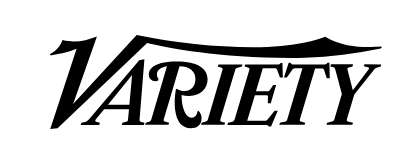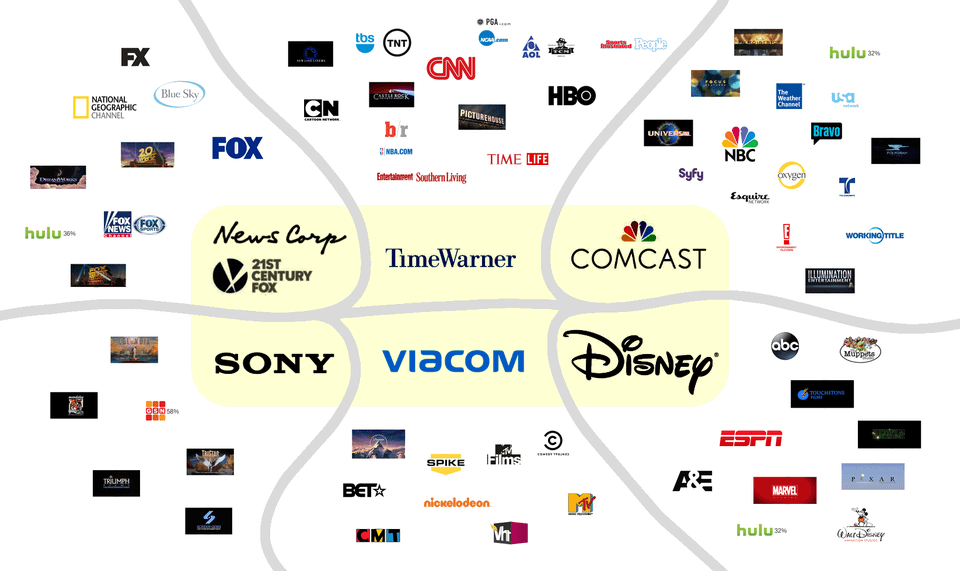Lights, Camera… Tariff! Can Canada’s Screen Industry Survive?
How a Single U.S. Policy Change Could Shatter Canada’s Film Economy and How We Can Flip The Script
Canada may not be the 51st state. But it acts as a stand-in for states all the time in film and TV.
To Donald Trump and his new Hollywood Ambassadors that is a BIG problem to be solved in the most Trump of ways… Tariffs.
Here’s a list of well-known American TV shows and movies with U.S. settings that were actually filmed in Canada—some of them might surprise you!
TV Shows
1. The X-Files (Vancouver, BC)
While the FBI agents roamed the U.S. investigating paranormal phenomena, most of the show’s early seasons were shot in the misty forests and city streets of Vancouver.
2. Supernatural (Vancouver, BC)
The Winchester brothers’ cross-country demon-hunting road trip? Almost entirely filmed in British Columbia, standing in for small-town America.
3. Riverdale (Vancouver, BC)
Archie and the gang’s adventures in the fictional town of Riverdale are all set in... Canada. The high school? That’s in New Westminster, BC.
4. Smallville (Vancouver, BC)
Superman’s small-town Kansas origins? Actually filmed across British Columbia, with Cloverdale standing in for Clark Kent’s hometown.
5. Suits (Toronto, ON)
Set in New York City but filmed in Toronto, Suits made full use of the city's financial district to stand in for Manhattan.
6. The Handmaid’s Tale (Toronto, ON)
The dystopian future of Gilead? Much of it was filmed in Toronto and Cambridge, Ontario, using real historic architecture to evoke a hauntingly realistic American backdrop.
7. The Boys (Toronto, ON)
This ultra-violent superhero satire is set in the U.S., but most of its action—including the headquarters of Vought International—was shot in Toronto.
8. Fargo (Calgary, AB)
Though the show’s name screams Minnesota, much of the series was filmed in and around Calgary, where the snow and small-town vibe fit perfectly.
Movies
9. Titanic (Halifax, NS)
Some of the Titanic sequences—including scenes with the lifeboats and the dock—were filmed in Nova Scotia, a real-life destination for Titanic survivors and wreckage.
10. Deadpool (Vancouver, BC)
The wisecracking antihero’s adventures are set in the U.S., but Vancouver serves as the primary filming location, with the Georgia Viaduct doubling for major freeway action scenes.
11. Juno (Vancouver, BC)
While set in Minnesota, Juno’s quirky coming-of-age story was filmed largely in Vancouver.
12. Good Will Hunting (Toronto, ON)
While the story takes place in Boston, key scenes—including those at MIT and Harvard—were shot at the University of Toronto.
13. Twilight (Vancouver, BC)
The gloomy, rainy Pacific Northwest setting of Forks, Washington? Mostly shot in British Columbia.
14. Brokeback Mountain (Alberta)
Wyoming’s breathtaking landscapes? That’s actually Alberta, with stunning shots filmed in Kananaskis Country and near Calgary.
15. The Revenant (Alberta)
Leonardo DiCaprio’s brutal survival epic takes place in the American frontier but was shot in Alberta’s frozen wilderness.
16. Catch Me If You Can (Montreal, QC)
Parts of the film set in Miami, New York, and even France were actually shot in Montreal.
17. The Incredible Hulk (Toronto, ON)
The battle between Hulk and the Abomination? That’s Toronto’s Yonge Street, not New York City.
18. Chicago (Toronto, ON)
The razzle-dazzle of 1920s Chicago was actually created using Toronto’s historic buildings.
19. Mean Girls (Toronto, ON)
High school drama set in Illinois, but filmed in Toronto. North Shore High? That’s actually Etobicoke Collegiate Institute.
20. It (Port Hope, ON)
The creepy town of Derry, Maine, where Pennywise lurks? That’s actually the quaint town of Port Hope, Ontario.
Canada’s film and TV industry has become Hollywood North, with productions taking advantage of the country’s stunning landscapes, cityscapes, and generous tax incentives. Next time you’re watching your favorite American show or movie, take a closer look—you might just spot a Canadian landmark!
How We Got Here
In the early 1990’s we set out to grow our domestic film and TV industry so that we could have our own great shows and sell them to the world. We did it! But along the way we also lured a lot of American production North. We call it Foreign Location Services (FLS). Hollywood calls it Runaway Production. And they are not happy about it.
Today FLS is about half of our industry in economic terms and a foundation stone of the crews, capabilities, and capacities that enable the whole industry.
In the coming weeks, we have a big problem.
“It is my honor to announce Jon Voight, Mel Gibson, and Sylvester Stallone, to be Special Ambassadors to a great but very troubled place, Hollywood, California,” Trump wrote on Truth Social Thursday. “They will serve as Special Envoys to me for the purpose of bringing Hollywood, which has lost much business over the last four years to Foreign Countries, BACK—BIGGER, BETTER, AND STRONGER THAN EVER BEFORE! These three very talented people will be my eyes and ears, and I will get done what they suggest. It will again be, like The United States of America itself, The Golden Age of Hollywood!”
Wait, US shows coming TO Canada isn’t an Export is it?
Unfortunately, there is two sides to every coin. Every US-made in Canada is effectively a show NOT made in the USA. The labour, materials, technology, services, and even the scenic locations themselves that we describe as the pretense for all this rather than admitting it is the lucrative cash incentives, are in reality a kind of export. Hollywood, and clearly Trump with his America First ideology, are gonna want it stopped.
Canada's film and television production services function as an export to the United States. The term "runaway production" describes the trend of U.S. film and TV projects being produced outside the country, with Canada being a primary destination due to its skilled workforce, diverse locations, favorable exchange rates, and attractive tax incentives. Kidding… it’s the cash. There are no other parts to this no matter how we spin spin it. It’s just a good old-fashioned cash-for-contracts scheme like you would see in any Hollywood, er.. Canadian, gangster movie.
Aren’t Canada’s cultural industries exempt from Taxes and Trade Tariffs?
Ya, sure, cultural industries. But let’s be honest about FLS. This is not that.
While cultural industries have traditionally been exempt from such trade measures, the current climate suggests a shift. President Trump has proposed imposing a 25% tariff on ALL imports from Canada, which could encompass various sectors.
Although the film and television industry has historically been considered a cultural sector and thus exempt from tariffs, the broad nature of the proposed tariffs and the reality of what FLS is introduces uncertainty. The lack of explicit exclusions for cultural industries in the proposed measures means that Canadian film and TV production services could potentially be affected.
The imposition of such tariffs would have significant repercussions. For U.S. studios, increased costs could diminish the financial appeal of producing in Canada, potentially leading to a decline in cross-border productions. This scenario would not only impact the Canadian economy but also disrupt the established collaborative framework between the two nations' entertainment industries.
While Canada's film and TV production services have long been a vital export to the U.S., the evolving trade policies under President Trump's administration introduce complexities that could challenge this dynamic. The potential inclusion of cultural industries in new tariff measures underscores the need for Canada to closely monitor policy developments and advocate for the preservation of the mutually beneficial relationship that has characterized U.S.-Canada film and television production collaborations.
What’s the Worst That Could Happen - And What Do We Do About It?
The era of easy U.S. investment is over.
Canadian creativity is world-class—we will have to stop selling it off like a raw commodity.
Hollywood is hoping Donald Trump will round up its ‘runaway productions’ and bring them back home. It’s time we built our own industry, for real.
We don’t need more ‘Can-Con.’ We need high-quality, timeless content that Canadian and global audiences actually want to watch, now and in the future.
This is not a drill. If we don’t restructure now, we lose the industry for good. What does a real Canadian screen industry look like?
Canada’s film industry is at a tipping point. For years, we’ve been the backlot of Hollywood, benefiting from foreign productions rather than cultivating a real self-sustaining industry of our own. Now, with President-elect Trump’s proposed 25% tariff threatening to pull U.S. investment, the Canadian screen sector faces an existential crisis. Do we continue to subsidize Hollywood’s projects, waiting for foreign productions to return, or do we take control and build a powerhouse industry that creates, owns, and exports its own world-class content? With the numbers already showing a sharp decline in production and investment, this is more than a policy debate—it’s a fight for the future of Canadian film and television. The time to act is now.
The Looming Crisis: Impact of a 25% U.S. Tariff on Canada’s Screen Industries
With the announcement of President-elect Donald Trump's proposed 25% tariff on Canadian screen industries, the already fragile sector faces an existential threat. Canada’s screen-based media production industry is deeply intertwined with foreign investments, particularly from the U.S. The latest Profile 2024 report from the Canadian Media Producers Association (CMPA) paints a concerning picture of an industry already in decline due to a mix of declining broadcaster revenues, Hollywood labor strikes, and inflationary pressures. The proposed tariff could decimate Canada’s competitive position, particularly in provinces like Nova Scotia, which have heavily invested in film and television as an economic pillar. This report provides an in-depth analysis of the current state of Canada’s screen industries, the potential consequences of the tariff, and recommendations for industry stakeholders and policymakers.
Trump’s Push to Repatriate Hollywood
While Trump did not explicitly mention Canada in his statement, the reference to “foreign countries” let’s be clear… it’s Canada. He’s talking about Canada. The amount of US shows filmed in China is effectively ZERO. Unfortunately in this story… we’re the baddies. Our tax incentives and outsourcing—including significant U.S. production in Canada—are key targets of his policy changes.
Its a delicate business. If even suggested the risk would be as if the tariffs we implemented. The risk would significantly deter U.S. producers from filming in Canada, further deepening the already sharp decline in production, foreign location, and service (FLS) work.
Economic Contribution & Foreign Investment
In 2023/24, total film and television production in Canada declined by 18.5% to $9.58 billion, with foreign location and service (FLS) production suffering the steepest drop (26.1%, to $4.73 billion).
Foreign investment in Canadian screen production fell 24.8%, amounting to $5.59 billion.
The screen sector generated 179,130 jobs, marking a 22% decline from the previous year.
Film and television production contributed $11.04 billion to Canada’s GDP, down 18.5% from the prior year.
Projected Impact of a 25% Tariff
Loss of U.S. Productions & Economic Fallout
A 25% tariff would effectively make Canada an uncompetitive filming destination, leading to a sharp reduction in Hollywood projects filmed in Canada.
Potential job losses could exceed 50,000, primarily in regional markets that lack entrenched industry ties.
GDP contribution from film and television could decline by an additional $3–4 billion, accelerating the existing downward trend.
Industry-Wide Assumptions & Forecasting Declines
Given CMPA’s data, we estimate that the following losses could be seen over the next 3-5 years:
A 30-40% decline in overall FLS production volume.
A 20-25% drop in total employment in the screen sector.
A 15-20% decrease in GDP contribution from film and television production.
Regional breakdown:
Toronto and Vancouver may experience only a 15-20% loss due to their close U.S. industry ties.
Quebec may see 5-10% reductions, as its French-language industry remains resilient and mitigates its risk.
Nova Scotia and other regions face the steepest declines, with potential losses of 50 to 100% in FLS work.
The Social Media and Streaming Wars: How They Exacerbate the Crisis
Canada’s ongoing regulatory battle with social media giants over news payments has further strained relations with U.S. corporations. The introduction of government-mandated fees for digital platforms to fund Canadian journalism has led to tensions, with tech companies like Meta and Google pushing back aggressively.
Simultaneously, Canada’s Online Streaming Act has mandated that global streaming giants contribute a portion of their Canadian revenue toward funding domestic content. These companies, including Netflix and Disney+, are legally resisting these requirements and considering scaling back operations or lobbying for regulatory changes that would minimize their obligations.
These regulatory clashes could lead to:
A decrease in U.S. investment in Canadian content and digital infrastructure.
More legal disputes that slow down potential partnerships and new projects.
A diminished attractiveness of Canada as a hub for content creation, further exacerbates the issues brought on by the tariff.
The combination of these disputes and the proposed tariff could cause a Perfect Storm of economic and creative contraction in Canada’s media industry, limiting its ability to compete on the global stage.
The Need for Structural Reform: Moving Beyond Can-Con
Lots of people will have ideas about what to do. The traditional model has been simple. Throw more money at it - more and higher incentives, more chum in the water attracts the biggest sharks.
Simply injecting more government funding into the industry will not solve the issue—this approach is at the heart of the U.S. grievances.
The answer is not more “Can-Con.” Conspicuously Canadian content is of little interest to Canadians, who are naturally curious about the world and their place in it. They expect American-level production and entertainment values, not a lesson in the latest political ideology. Content that is overly tied to Canadian current affairs will not attract broad audiences, will not age well, nor will it travel and sell internationally.
Our screen industries must recognize that they are built for trade to ultimately be sustainable—not just domestic consumption. Much like how German beer, Swiss watches, and French luxury goods were perfected for a small but discerning local market before becoming internationally dominant, Canada must focus on creating high-quality, timeless content that appeals to a broad global audience.
The industry must also diversify—not in the identity politics sense, which undermines commercial success—but in the sense of preventing oligopoly and monopoly in content, production, broadcast, and geographic centralization. Diverse, decentralized production creates a competitive, free-market industry that fosters excellence, innovation, new voices, and ideas that entertain and inform both Canada and the world.
This requires:
Producing stories with universal appeal while ensuring Canadian stories maintain their distinctiveness.
Developing sophisticated content production, broadcast, and distribution systems that understand and appreciate global market needs.
Strengthening regional broadcast platforms, channels, and audience engagement.
Building a robust global distribution network to effectively export Canadian content worldwide.
Encouraging domestic studios to scale up, acquire IP, and expand market reach beyond being a vendor for U.S. productions.
Reality Check: We live in the YouTube Era
Key Points
YouTube made up nearly 10% of all viewership on connected and traditional TVs in the U.S. last year, according to Nielsen. Netflix ranked second, claiming 7.6% of viewership.
“We’re not talking about your mobile phone, your laptop ... but on the biggest screen in the house, the TV,” said LightShed media analyst Rich Greenfield. “Every [media] executive has to be paying attention.”
Media companies such as Netflix, Disney, and Warner Bros. Discovery don’t have a uniform strategy to deal with the threat.
The landscape of the entertainment industry is undergoing a seismic shift, with YouTube emerging as the force that rivals, and in some aspects surpasses, traditional media giants like Netflix. This transformation is particularly poignant in Canada where old entrenched systems have the power and government support to hang on to their dying empires.
YouTube is being underestimated by the industry, the market, and even the company that owns it. There are Canadian kitchen table-based YouTubers achieving numbers and reach that the CBC with its billions could only dream of. It is a true and sustainable grassroots phenomenon mixed in with the weeds of other social and sharing platforms. YouTube is no longer just a platform. It's too important and foundational to modern life. YouTube is not the channel or network - it's more like the electrical grid or our highway system. Any new plan for the Canadian entertainment industry has to respect YouTube, the genuine grassroots audience, and the fundamental change it brings.
YouTube's Financial Prowess
Forbes estimates the YouTube creator industry is worth $250 billion today, and Goldman Sachs predicts the number will swell to nearly $500 billion by 2027.
The 50 honorees of the 2024 Forbes Top Creator list are riding the growth of the creator ecosystem (now estimated to be nearly 50 million people strong). This year’s listers earned almost $720 million over the last 12 months—a jump of $20 million from 2023. Since last year, Forbes Top Creators have added more than 100 million followers to their collective total—now boasting more than 2.7 billion followers across YouTube and other platforms.
Creators are now harnessing their social influence to evolve from entertainers to entrepreneurs. MrBeast, Khaby Lame, the D'Amelio sisters, the Paul brothers, and Emma Chamberlain run their own brands, hawking hamburgers, cooking tools, shoes, energy drinks, and coffee nationwide.
This substantial payout highlights YouTube's role as a major revenue source for creators, artists, and media companies, solidifying its position as a powerhouse in the digital entertainment landscape.
Summrizing the situation Ted Gioia reports this week that
YouTube now pays more money to video creators than Netflix.
Why move to Hollywood when you can film a YouTube video in your parent’s basement. That might sound absurd, but indie creators are now making more money than professional filmmakers.
And that YouTube revenue share only accounts for a fraction of the money creators are gener…
YouTube now pays out 55% of revenues to creators for regular videos (and 45% for their Shorts videos).
Canadian Creators on the Global Stage
In Canada, YouTube has democratized content creation, enabling individuals to reach global audiences from their own homes. The platform has facilitated the rise of approximately 160,000 Canadian creative entrepreneurs, with 40,000 achieving sufficient audience traction to monetize their channels. Notably, the Canadian Media Fund is reporting that 90% of views on Canadian channels originate from outside Canada, showcasing the global appeal of Canadian content.
Comparative Reach: YouTubers vs. Traditional Media
The influence of Canadian YouTubers is further highlighted when compared to traditional media outlets. For instance, prominent Canadian YouTube channels boast millions of subscribers, often surpassing the digital reach of established broadcasters. This shift indicates a changing preference among audiences, who are increasingly turning to digital platforms for content consumption.
YouTube's Integral Role in Modern Life
Beyond being a content platform, YouTube has become an essential part of daily life. Its vast repository of videos serves diverse purposes—from education and entertainment to news and community building—making it indispensable to users worldwide.
Implications for the Canadian Entertainment Industry
As discussions around tariffs and industry dynamics continue, it's crucial for stakeholders in the Canadian entertainment sector to recognize and integrate YouTube's pervasive influence. Any strategic planning must account for the platform's role in content distribution and audience engagement. Embracing this digital shift can open new avenues for growth, ensuring that Canadian content thrives both domestically and internationally.
YouTube's evolution from a simple video-sharing site to a central pillar of the entertainment industry underscores the need for traditional media and policymakers to adapt. By acknowledging and leveraging the platform's capabilities, the Canadian entertainment industry can navigate the challenges of tariffs and market changes, positioning itself for sustained success in the digital age.
The Tax Credits, Incentives, and Industry Groups were the right tools for the task 30 years ago. Now too much has fundamentally changed. We need to stop and begin again with new goals, new tools, and new ways of thinking about what we are really trying to achieve. It is not and should not be the goal of policy to use the words of change, innovation, and growth, while actually holding back progress, casing the past glories in amber, and actively undermining the shape of things to come.
New tools for a new task.
The Canadian screen industry is at a crossroads. While it has demonstrated resilience through economic downturns, labor strikes, and shifting content consumption patterns, a 25% tariff would be catastrophic. The solution is not more government funding but a fundamental restructuring of how Canada supports, produces, shares, and sells its content.
Canada’s industry must evolve from a subsidized production service hub to a powerhouse of original intellectual property. Building self-sufficient studios, prioritizing ownership of content, and strengthening domestic distribution networks will be critical to securing the future of Canada’s screen sector.
Immediate action is required from both government and industry leaders to mitigate the damage and explore new avenues for growth. Without intervention, Canada's long-standing role as a premier global production hub may soon be a thing of the past.
RELATED:
Canada’s Film Future: Boom or Bust
As a favourite filming location for Tinseltown's big-budget productions, Canada has always been ready for its close-up—even when it's doubling for somewhere else! But what happens if there is suddenly a 25% tax on Canadian service production?
Can We Solve Canada's Entertainment Industry Monopoly Problem?
Denise Hearn & Vass Bednar's new book, The Big Fix, explores how Canadian government policies entrench monopolies, stifling innovation and competition. Nowhere is this more in our faces than in Canada's dying entertainment industry; an apocalypse of giant zombie companies eating our brains, creative workers, and cash - where cultural ideology, quotas, a…













Yes, Canada needs more scripts and stories about itself and its own fascinating history. This I am attempting to do with my story lines in Migrations, 1846-48, if I can find an agent to discuss it with! Anyone know an agent who might be interested in discussing a big storyline for Netflix, Crave, Disney, etc.? Iain Taylor, Halifax.